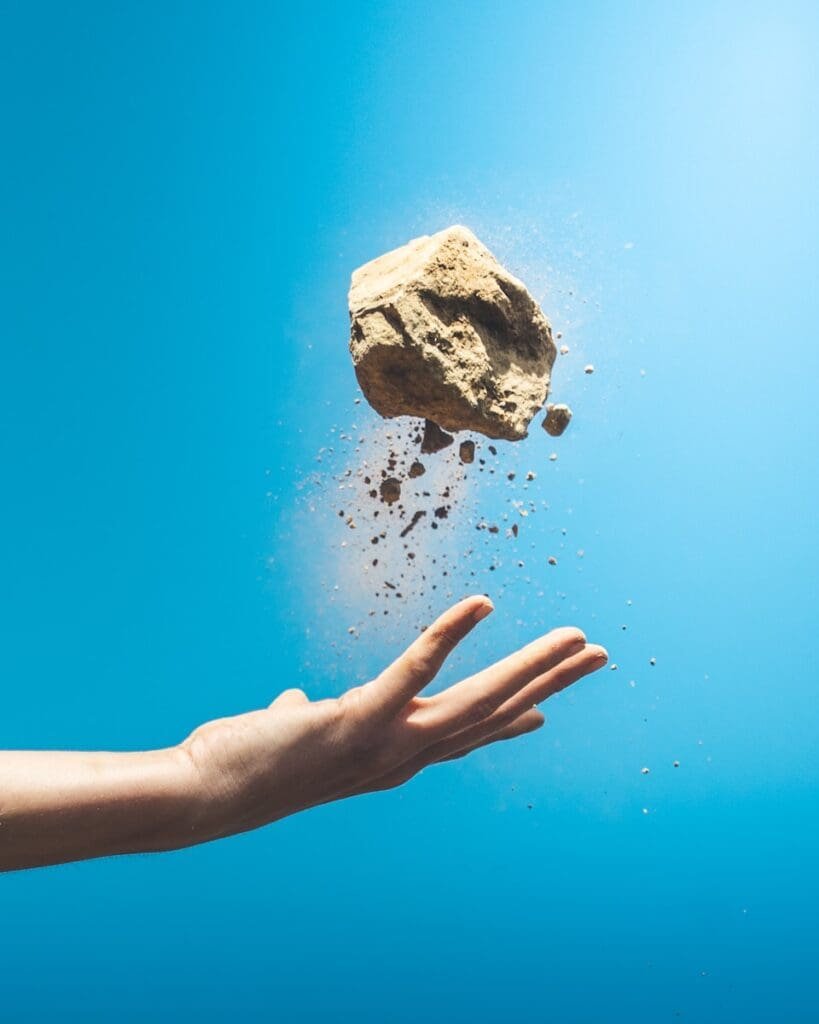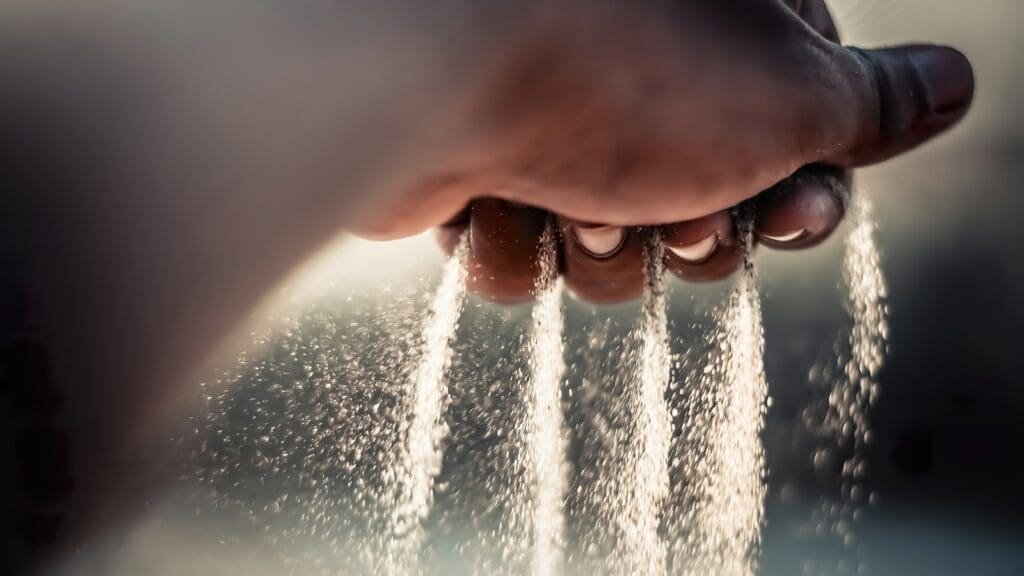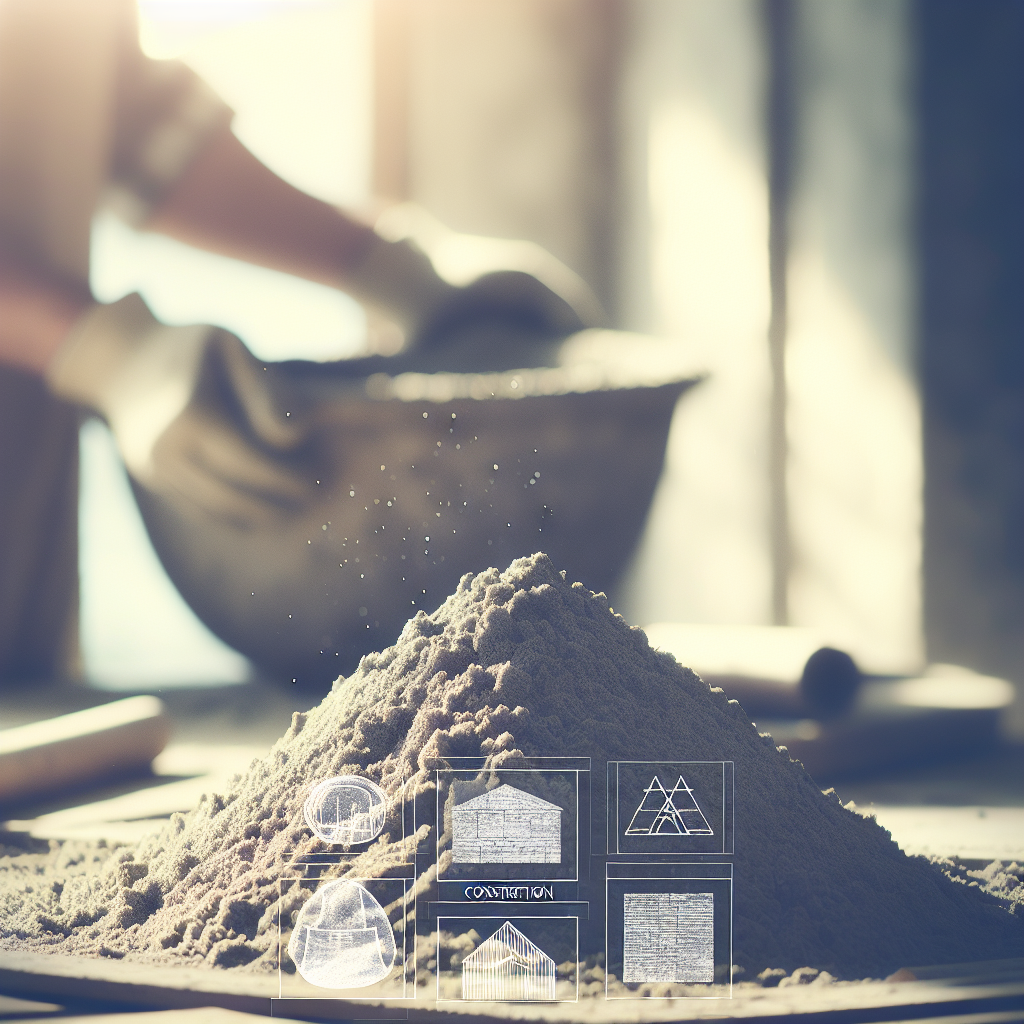Introduction: Making the Right Choices with Mortar Sand
Choosing the right type of sand is important when it comes to constructing a building. Did you know that the quality and type of sand used can significantly affect the strength and durability of your mortar?
In this article, we’ll guide you through a practical understanding of the essential characteristics for ideal mortar sand and how different sand types can impact your project’s outcome.
We’ll also cover the performance benefits of using the correct sand type, elaborate on the preferred choice of masons, and share some essential tips for mixing mortar with sand. By the end of our discussion, you’ll be well-equipped to choose wisely and build proficiently.
Ready to boost your sand selection skills?
Table of Contents
Choosing the Right Sand for Mortar: Key Considerations

Characteristics of Ideal Mortar Sand
Understanding the right sand for mortar involves knowing the specific traits that make one type of sand more suitable than another.
- Grain Size: The grains should be medium-sized for good bonding.
- Cleanliness: Sand must be free from impurities like clay, silt, and salts.
- Sharpness: Sand grains should be angular rather than rounded.
Types of Sand for Mortar
Several types of sand are commonly used in construction, but not all are suitable for creating strong and durable mortar. Below is a comparison of the common sands used for mortar mixes:
| Type of Sand | Characteristics | Suitability for Mortar |
|---|---|---|
| Builder’s Sand | Fine grain, generally clean, readily available | Good |
| Sharp Sand | Coarse grain, angular, minimal impurities | Very Good |
| Mason’s Sand | Smooth, fine grain, very clean | Excellent |
| Concrete Sand | Larger grains, often mixed with fine grains | Poor |
Preferred Choice: Mason’s Sand
When it comes to quality and performance, mason’s sand stands out.
- Finely Graded: Provides a smooth finish, ideal for brick and block laying.
- Clean: Superior cleanliness compared to other sands reduces the likelihood of bonding issues.
- Consistent Quality: Ensures uniform mortar mix, resulting in stronger structures.
For more detailed information, you can refer to the Bob Vila guide on types of sand.
Tips for Mixing Mortar with Sand
- Proper Ratio: Maintain the ideal cement-to-sand ratio, generally 1:3 (one part cement to three parts sand).
- Water Content: Add water gradually to achieve a workable but not too wet mix.
- Mixing Time: Ensure thorough mixing to evenly distribute the materials.
Choosing the right type of sand and mixing it correctly plays a key role in the longevity and strength of your construction projects.
Do You Need Sand to Make Mortar?

When creating mortar, sand is an essential component. Without sand, mortar would lack the necessary strength and bonding properties to effectively support masonry structures.
The Role of Sand in Mortar Mix
Sand serves multiple important functions in a mortar mix:
- Volume Filler: Sand acts as a filler to bulk up the mix, making it more cost-effective.
- Strength Provider: It adds compressive strength to the mortar, ensuring it can support the weight of the masonry units.
- Workability: The grainy texture of sand improves the workability of the mortar, making it easier to spread and apply.
- Avoiding Shrinkage: Without sand, the mortar would shrink excessively when drying, leading to cracks and structural failures.
Types of Sand Primarily Used in Mortar Mixes
Different types of sand can be used, but their suitability varies depending on specific requirements of the construction project.
- Builder’s Sand: Often used for general building purposes, it is fine and readily available but may contain impurities.
- Sharp Sand: Known for its coarse and angular grains, it is excellent for strong bonding but may not be as smooth to work with.
- Mason’s Sand: Preferred for its fineness and cleanliness, it offers a smooth finish ideal for brick and block laying.
- Concrete Sand: Generally not suitable due to its larger grain size, which can lead to weak mortar.
Importance of the Right Sand-to-Cement Ratio
Maintaining the correct sand-to-cement ratio is key for the performance of mortar.
- Standard Ratio: Typically, a ratio of 1 part cement to 3 parts sand is used. Adjustments can be made based on specific project needs.
- Consistency: Consistent proportions ensure that the mortar achieves the desired strength and durability.
- Avoiding Excess Sand: Too much sand can weaken the mortar, making it crumbly and less adhesive.
Quality Checks for Sand in Mortar Mix
Ensuring the quality of the sand used in mortar is vital.
- Sieve Analysis: Conduct a sieve analysis to determine the grain size distribution and remove large particles.
- Cleanliness Test: Check for impurities like clay, silt, or organic matter that could weaken the mortar.
- Moisture Content: Ensure the sand is dry or has a controlled moisture content to avoid affecting the water ratio in the mix.
Using the right type and quality of sand, combined with a proper mixing process, ensures that the mortar will be durable, strong, and effective for your construction projects.
Is Mortar Sand the Same as Mason Sand?
While mortar sand and mason sand are often discussed interchangeably, they are distinct with unique applications and characteristics.
Defining Mortar Sand
Mortar sand refers broadly to sand used in mortar mixes, and its quality directly affects the mortar’s performance.
- Sizing: Mortar sand typically has a fine to medium grain size, providing the right balance between workability and strength.
- Source: Mortar sand can be sourced from various locations, which may influence its cleanliness and consistency.
- Common Use: Used in general masonry work, suitable for laying bricks, blocks, and stone.
Understanding Mason Sand
Mason sand, a subtype of mortar sand, is often considered the premium choice due to its enhanced properties.
- Fineness: Mason sand is finer and smoother than other types of mortar sand, offering a more polished finish.
- Purity: It undergoes stringent cleaning processes to remove impurities, ensuring superior bonding and longevity.
- Specialty Use: Ideal for projects where appearance and finish are prioritized, such as in decorative mortar applications and high-end construction.
Comparing Mortar Sand and Mason Sand
Let’s look at a side-by-side comparison to highlight the differences:
| Aspect | Mortar Sand | Mason Sand |
|---|---|---|
| Grain Size | Fine to medium | Fine and uniform |
| Purity | May contain some impurities depending on source | Highly pure, minimal impurities |
| Application | General masonry work | Decorative masonry, high-quality finishes |
Knowing When to Use Each Type
Choosing between mortar sand and mason sand depends on the specific requirements of your project.
- General Masonry: For everyday bricklaying, general mortar sand usually suffices. It provides good bonding and structural integrity.
- Finish Work: For projects where appearance is important, mason sand should be your go-to due to its fine texture and superior finish.
- Budget Considerations: Mason sand often comes at a higher price point due to its refined qualities. Allocate your resources accordingly based on project needs.
Ensuring you select the correct type of sand for your specific project can lead to better results, increased durability, and enhanced aesthetic appeal.
Conclusion: Understanding the Importance of Choosing the Right Sand for Mortar
As this article has highlighted, the sand you choose to create your mortar plays a key role in shaping the strength, workability, and longevity of your masonry work.
Considering elements like grain size, cleanliness, and sharpness are integral in selecting the ideal sand type – most notably Mason’s Sand.
Keeping in mind the right sand-to-cement ratio and effective quality checks can significantly enhance your construction projects and ensure durable structures.
Frequently Asked Questions – FAQs
What is the best type of sand for mortar?
Mason’s Sand is usually the best choice for mortar due to its fine grain, cleanliness, and consistent quality. It provides a smooth finish, making it ideal for brick and block laying.
Why is sand necessary in mortar?
Sand is important in mortar as it bulks up the mix, provides strength, improves workability, and prevents excessive shrinkage of the mortar when drying.
What is the ideal sand to cement ratio in mortar?
The typical sand to cement ratio in mortar is 1 part cement to 3 parts sand. However, this can be adjusted based on specific project needs and environmental factors.
How can I check the quality of sand for my mortar?
Conducting a sieve analysis, cleanliness test, and checking the moisture content can help to ensure the quality of your sand.






